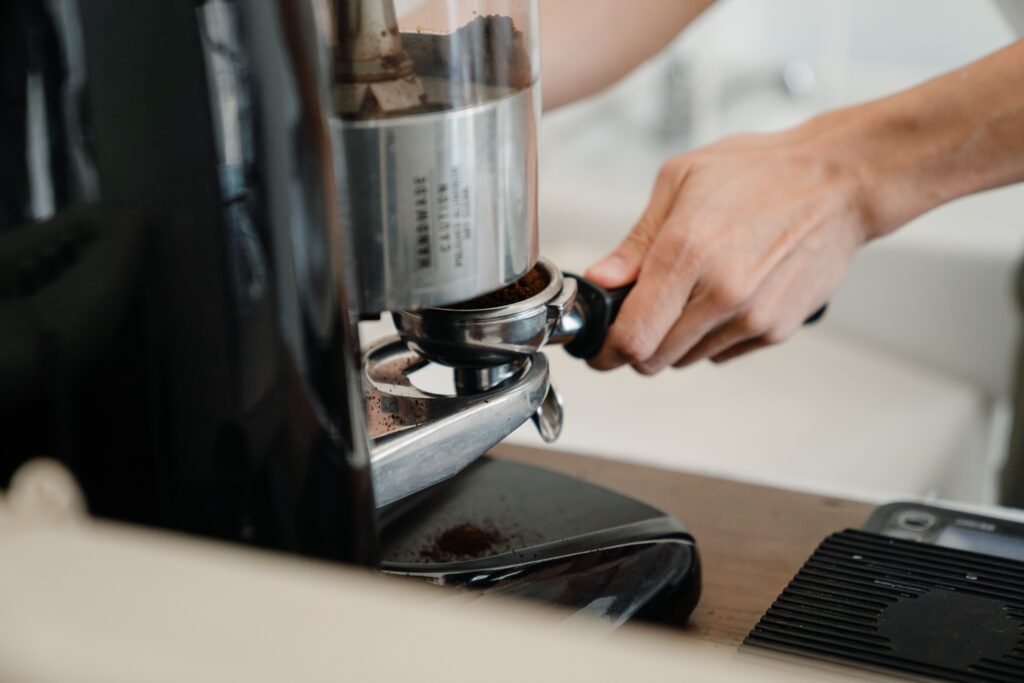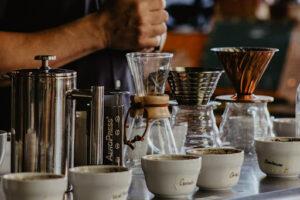If you appreciate the aroma and flavor of freshly ground coffee, you’ve come to the right place. This guide will not only show you how to grind coffee beans with a grinder but also explore the art of grinding coffee beans without a grinder to help you perfect your brew. Whether you’re a seasoned coffee enthusiast or just starting to explore the wonders of home-brewed coffee, understanding the grinding process is a crucial step toward unlocking the full potential of your favorite beans. So, grab your favorite mug, and let’s dive into the beautiful journey of grinding coffee beans.
Grinding Coffee Beans Without a Grinder
When you find yourself without a coffee grinder, there are alternative methods that can come to your rescue. The first and most basic option is grinding the coffee beans by hand, using a mortar and pestle, or simply placing them in a sturdy plastic bag and gently brushing them with a rolling pin. Another option is to use a blender, although it may yield inconsistent results due to the blade’s high speed.
Similarly, a food processor can be employed, but you might need more precision and control for the perfect grind. It’s essential to remember that achieving the desired grind type can be easier with a dedicated coffee grinder. Adjusting your brewing method is crucial to extract the best flavors from freshly ground beans.
Grinding Coffee by Hand
Grinding coffee beans by hand offers distinct advantages in preserving the flavor and aroma of your coffee. With manual grinding, you gain better control over the grind size, leading to a more consistent and uniform result that enhances the extraction process during brewing.
Techniques like using a mortar and pestle, a rolling pin, or a hammer and plastic bag allow customized grinding, ensuring a satisfying cup of coffee with rich and pronounced flavors. Though it may require a little more effort, the rewarding taste of hand-ground coffee makes it a preferred method for many coffee enthusiasts seeking a truly delightful brew.
Using A Blender
To grind coffee beans using a blender:
- Add a small batch of beans into the jar.
- You can achieve a consistent grind by pulsing the blender rather than continuously running it.
- Be mindful of your desired grind consistency, adjusting the grinding time accordingly for finer or coarser results.
Additionally, to prevent overheating the coffee and potentially altering its flavor, blending the beans only for a short time is essential. Give the blender and beans short breaks between pulses to maintain a moderate temperature during grinding. With these considerations in mind, you can use a blender effectively to achieve the desired grind for your perfect cup of coffee.
Grinding Coffee with a Food Processor
Grinding coffee beans with a food processor is a viable option for those without a dedicated coffee grinder. Add a small amount of coffee beans to the food processor bowl to begin the process. It’s crucial to use short pulses instead of continuous blending to avoid overheating the beans, which could compromise their flavor. By using brief pulses, you can achieve a more even grind consistency, ensuring that the coffee grounds are well-suited for your preferred brewing method, whether drip coffee, French press, or espresso.
The Different Levels of Coffee Grinds
Understanding the different levels of coffee grinds is essential for tailoring your brewing method to achieve the perfect cup of coffee. A coarse grind is characterized by large particles, similar to sea salt, suitable for French press and cold brew methods. Medium-coarse grind has a texture resembling coarse sand and works well with drip brewers—medium grind, similar to granulated sugar, suits methods like pour-over and automatic drip machines.
Finally, fine grind, comparable to table salt, is ideal for espresso machines. You can spot-check your grind size by taking a pinch of coffee between your fingers; coarser grinds will feel rough, while finer grinds will feel smoother. Adjusting your grind size based on these distinctions will significantly impact the flavor and quality of your coffee.
How Long to Use a Coffee Grinder to Make Coarse Coffee?
Follow these instructions to achieve a coarse coffee grind suitable for French press or cold brew. Start by placing the desired amount of coffee beans in the grinder’s hopper. For a coarse grind, aim for a consistency similar to sea salt with larger particles. The ideal grind time typically ranges from 8 to 10 seconds, but it may vary depending on your grinder’s power and settings.
Remember to pause the grinder occasionally to shake or stir the coffee grounds, ensuring a uniform grind. Once you achieve the desired coarseness, transfer the coffee grounds to your French press or cold brew maker, ready to brew a delightful cup of coffee with a robust and full-bodied flavor profile.
Grinding For Medium-Coarse Coffee
For those seeking a medium-coarse coffee grind, ideal for pour-over and Chemex brewing, here’s a helpful guide on grinding coffee beans to achieve the perfect consistency. Begin by placing the desired coffee beans into your grinder’s hopper. Aim for a ground consistency similar to that of coarse sand. The recommended grind time is typically 10 to 12 seconds, but this may vary based on your grinder’s specifications and power.
Be attentive during grinding, ensuring the particles are evenly ground to achieve a uniform texture. Once you’ve reached the ideal medium-coarse grind, you’re all set to prepare a flavorful cup of coffee through the pour-over or Chemex method, bringing out the rich aromas and nuanced taste profiles of your chosen beans.
Making Medium Coffee
When aiming for a medium coffee grind that suits drip coffee makers, follow these guidelines for a delightful brewing experience. Begin by placing the desired coffee beans in your grinder’s hopper. The coffee particles should resemble granulated sugar in size for a medium grind.
The ideal grind time typically ranges from 12 to 15 seconds, but adjusting based on your grinder’s power and settings is essential. Achieving a uniform and consistent medium grind is critical to extracting the perfect balance of flavors and aromas during drip brewing, resulting in a satisfying cup of fine and coarse coffee.
How Long to Use a Coffee Grinder For Fine Coffee
To achieve a fine coffee grind ideal for espresso machines, follow these steps for a flavorful cup of espresso. Start by placing the desired coffee beans in your grinder’s hopper. The coffee particles should resemble table salt in size for a fine grind. The optimal grind time usually falls between 20 to 25 seconds, but adjusting according to your grinder’s power and settings is essential.
A uniform and fine grind is crucial for espresso brewing, as it allows for proper extraction and the creation of rich, intense flavors and a thick crema that characterizes a well-crafted espresso shot.
What’s The Difference Between a Blade Grinder vs. a Burr Grinder?
The primary difference between blade grinders and burr grinders is their grinding mechanism. Blade grinders use a spinning blade to chop coffee beans, resulting in an inconsistent grind size, with some particles being finer while others remain coarse. On the other hand, burr grinders crush coffee beans between two burrs, leading to a more uniform grind size and better control over the fineness.
Burr grinders offer superior grind consistency, making them ideal for various brewing methods, whereas blade grinders are more affordable but may produce uneven grounds, potentially affecting the coffee flavor. Investing in a burr grinder is often the preferred choice for coffee enthusiasts seeking precision and a higher-quality brew.
Looking for Quality Coffee Beans?
Mastering the art of grinding coffee beans is crucial to perfecting your coffee brewing experience. Whether you opt for hand grinding, using a blender, or a food processor, understanding the different grind sizes and their impact on flavor extraction allows you to tailor your coffee to your preferences.
For those seeking a consistent and flavorful cup of coffee, investing in a burr grinder can make a significant difference. To further elevate your coffee journey, consider exploring Cherri Cafe, offering premium coffee beans. With our carefully curated selection of coffee beans, you can enhance your brewing experience and savor the freshest and most quality coffee. Contact us and unlock a world of delightful coffee possibilities!




